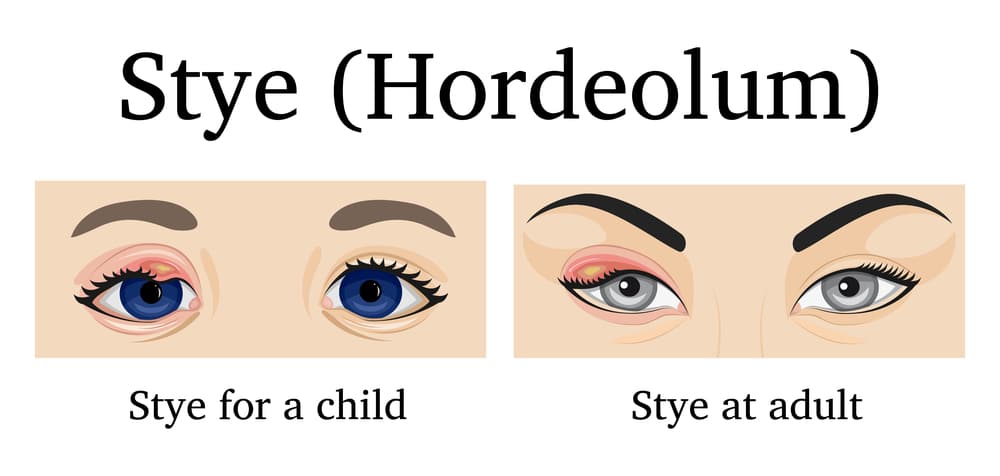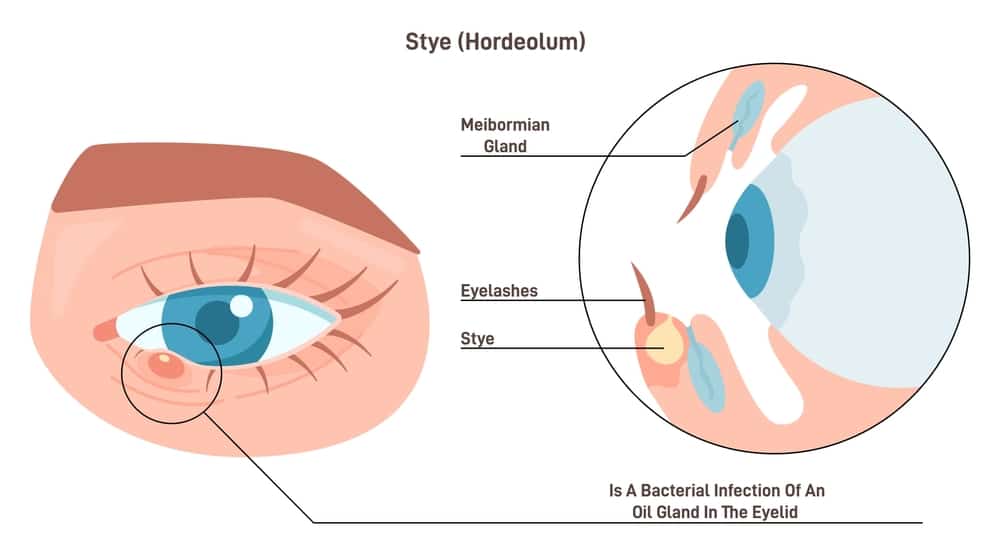Eye Care, Eye Health, mypear
Eye Ointment For Stye
A simple medication is used to treat Stye called Eye ointment for Stye. It works to inhibit bacterial growth and alleviate the infection associated with the stye. Stye is a painful, red, and swollen bumps that form along the edge of the eyelid.
Stye, medically known as a “Hordeolum”, is a localized infection that typically occurs at the base of an eyelash or within an oil gland in the eyelid. It manifests as a red, painful swelling resembling a pimple. Styes are often caused by the bacterial strain Staphylococcus aureus.
The application of an eye ointment specifically designed for styes is a common therapeutic approach. These ointments typically contain antibiotics, such as erythromycin or bacitracin, which work to inhibit bacterial growth and alleviate the infection associated with the stye. Additionally, some formulations may include anti-inflammatory agents to reduce swelling and discomfort.
Selecting the best stye eye ointment depends on the severity of the condition and individual sensitivities. It is advisable to consult with a healthcare professional for personalized recommendations based on your specific circumstances. Generally, over-the-counter ointments containing the aforementioned antibiotics can be effective for mild cases. For more severe or recurrent styes, a prescription-strength ointment or other interventions may be necessary.
As a usual query Does stye eye ointment work?
It is important to note that these ointments are designed to address the bacterial aspect of the stye and can be effective in promoting resolution. However, their efficacy may vary among individuals. It is crucial to follow the prescribed or recommended application guidelines, and if symptoms persist or worsen, seek medical advice promptly.
In conclusion, utilizing an eye ointment for stye, especially one containing antibiotics, can be an effective part of the treatment regimen. However, individual responses may differ, and consulting with a healthcare professional ensures appropriate and tailored management of stye-related concerns.

Identifying a Stye and Preventive Measures
A stye, or hordeolum, is a localized infection typically arising from Staphylococcus aureus bacteria, manifesting as a painful, red swelling near the eyelash base or within an eyelid oil gland. Identifying a Stye and implementing preventive measures are crucial for ocular health.
Identification
Painful Eyelid Bump Styes often present as a tender lump on the eyelid, resembling a pimple.
Redness and Swelling The affected area becomes red and swollen, and may cause discomfort, especially during blinking.
Preventive Measures
Maintain Good Hygiene Regular Handwashing Prevent bacterial transmission to the eyes by maintaining good hand hygiene.
Avoid Eye Rubbing Minimize the risk of introducing bacteria by refraining from rubbing your eyes.
Contact Lens Hygiene
Proper Cleaning If using contact lenses, adhere to rigorous cleaning routines to prevent bacterial contamination.
Limit Wear During Infection Avoid wearing contact lenses when a stye is present to facilitate faster healing.
Warm Compresses
Enhance Blood Circulation Apply warm compresses to the affected eye for 15 minutes multiple times a day.
Promote Drainage Heat aids in opening blocked glands and promoting drainage, easing stye discomfort.
Avoid Squeezing
Risk of Spread Refrain from squeezing or attempting to drain the stye, as this may exacerbate the infection and increase the risk of spread.
Eye Ointment for Stye
Topical Antibiotics Consider using over-the-counter eye ointments containing antibiotics, such as erythromycin or bacitracin, as prescribed or recommended by a healthcare professional.
Effectiveness These ointments work by inhibiting bacterial growth and alleviating infection, contributing to stye resolution.
Maintain Overall Health
Balanced Diet Consume a nutritious diet rich in vitamins and minerals to support overall eye health.
Adequate Sleep Ensure sufficient sleep, as fatigue can compromise the immune system and contribute to stye development.
Seek Medical Advice
Persistent Symptoms Consult a healthcare professional if the symptoms persist or worsen.
Prescription Ointments For severe cases, a healthcare provider may recommend prescription-strength ointments or other interventions.
By diligently adhering to these preventive measures and promptly identifying and addressing styes, individuals can significantly reduce the likelihood of stye occurrence and promote overall eye health. If in doubt or experiencing persistent symptoms, seeking professional medical advice ensures appropriate management and personalized care.

How Eye Ointment for Stye Work
Eye ointment for stye works through a targeted approach to address the bacterial infection associated with this ocular condition.
Here’s a breakdown of how these ointments function
Antibacterial Agents Most eye ointments for styes contain antibiotics such as erythromycin or bacitracin. These antibiotics work by inhibiting the growth and multiplication of bacteria, particularly Staphylococcus aureus, which commonly causes styes.
Inhibition of Bacterial Growth The active ingredients in the ointment penetrates the affected area, reaching the base of the eyelash or oil gland where the stye has developed. By inhibiting bacterial growth, the ointment helps to eliminate the infection and alleviate symptoms associated with the stye.
Anti-Inflammatory Properties Some formulations may include anti-inflammatory agents, contributing to the reduction of swelling and discomfort associated with the stye. This helps to improve the overall comfort of the affected eye.
Promotion of Healing The ointment aids in the healing process by promoting the resolution of the stye. Regular and proper application is crucial to achieving optimal therapeutic benefits.
In the broader context of best stye eye ointment and does stye eye ointment works, it is essential to choose an ointment based on the severity of the stye and individual sensitivities.
Over-the-counter options with antibiotics are often effective for mild cases, while prescription-strength ointments may be recommended for more severe or recurrent styes. Ultimately, seeking advice from a healthcare professional ensures the appropriate selection and usage of an eye ointment tailored to individual needs.
Our Recommendations for The Best Eye ointment for stye
Stye eye ointments, such as those containing antibiotics, are commonly prescribed. They work by addressing the underlying bacterial infection, reducing inflammation, and promoting healing. Consulting with an eye care professional is recommended for appropriate diagnosis and treatment.
One of the best eye ointments for stye is Bacitracin ophthalmic ointment. This ointment contains Bacitracin, which is a potent antibiotic that helps to kill the bacteria causing the stye. Bacitracin ophthalmic ointment also contains petrolatum, a mineral oil-based ingredient that helps to soothe the eyes and adds moisture.
Another popular eye ointment for stye is Erythromycin ophthalmic ointment. Erythromycin is an antibiotic that works by stopping the growth of bacteria. This ointment is especially useful for people who are allergic to Bacitracin.
In addition to these two options, there are other over-the-counter eye ointments available that are effective in treating stye. It is important to speak with your doctor or pharmacist to determine which one is best for you.
Things To Remember While Using Eye Ointment For Stye
When using eye ointment for a stye, it’s essential to follow specific guidelines to ensure both safety and efficacy. Styes, or hordeolums, are localized infections that typically affect the eyelid, causing redness, swelling, and discomfort. Using the right eye ointment can help alleviate symptoms and promote healing. Here are important considerations, along with a list of DOs and DON’Ts when using eye ointment for stye.
Choosing the Right Eye Ointment for Stye
Selecting the best stye eye ointment is crucial for effective treatment. Consult with your healthcare provider to determine the most suitable ointment based on the specific characteristics of your stye. Factors such as the presence of bacterial infection, severity, and individual health considerations will influence the choice of medication.
Proper Application of Eye Ointment
Clean Hands Before Applying any eye ointment, thoroughly wash your hands to prevent introducing additional bacteria.
Remove Contact Lenses If you wear contact lenses, remove them before applying the ointment. Contact lenses can trap bacteria and hinder the healing process.
Minimal Amount Apply a thin, even layer of the prescribed eye ointment directly to the affected eyelid or as directed by your healthcare provider.
Avoid Touching the Tip Refrain from touching the tip of the ointment tube to prevent contamination.
Dispose of Tubes Properly Dispose of single-use tubes responsibly, and if using a multi-use tube, ensure proper storage and hygiene to avoid bacterial contamination.
DOs for Effective Stye Treatment
Follow your Healthcare Provider’s Instructions Adhere strictly to the instructions provided by your healthcare provider regarding the frequency and duration of the eye ointment application.
Maintain Eye Hygiene Gently clean the affected eyelid with a warm, moist compress before applying the eye ointment to remove any debris or crusting.
Complete the Full Course Even if symptoms improve before completing the prescribed duration, continue using the eye ointment as directed. Incomplete treatment may lead to recurrence or antibiotic resistance.
Practice Good General Hygiene Avoid sharing towels, pillows, or any personal items that may come in contact with the affected eye to prevent the spread of bacteria.
DON’Ts for Stye Treatment
Use Expired Medications Do not use expired eye ointments. Expired medications may not be effective and could potentially cause harm.
Wear Contact Lenses During Treatment Refrain from wearing contact lenses until the stye has completely healed. Contact lenses can introduce bacteria and hinder the recovery process.
Apply Ointments With Contaminated Hands Avoid applying eye ointment with unwashed or contaminated hands to prevent secondary infections.
Discontinue Treatment Prematurely Do not stop using the prescribed eye ointment before completing the full course, as this may lead to inadequate treatment and a higher likelihood of recurrence.

Conclusion
In conclusion, Recognizing the symptoms of a stye, such as red, swollen bumps on the eyelid accompanied by pain and tenderness, is crucial for timely intervention. Seeking professional medical advice ensures accurate diagnosis and appropriate treatment, often involving the use of eye ointments.
Preventive measures, including maintaining eye hygiene, avoiding eye rubbing, practicing meticulous contact lens care, refraining from sharing personal items, and addressing conditions like blepharitis, contribute to minimizing the risk of styes.
When a stye does develop, collaboration with healthcare providers to select the best stye eye ointment and consistent, prescribed use are essential for effective treatment. By incorporating these measures, individuals can foster optimal ocular health, mitigate discomfort, and reduce the likelihood of stye recurrence.



